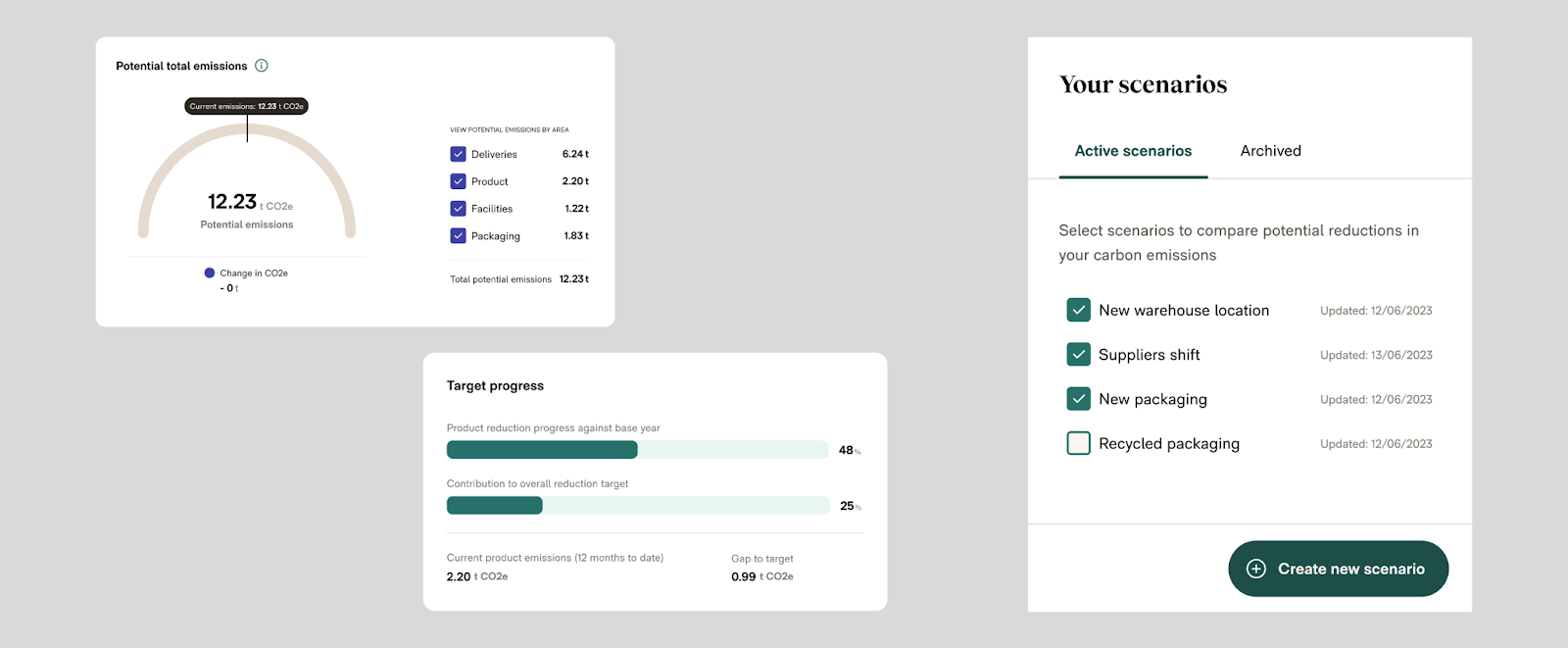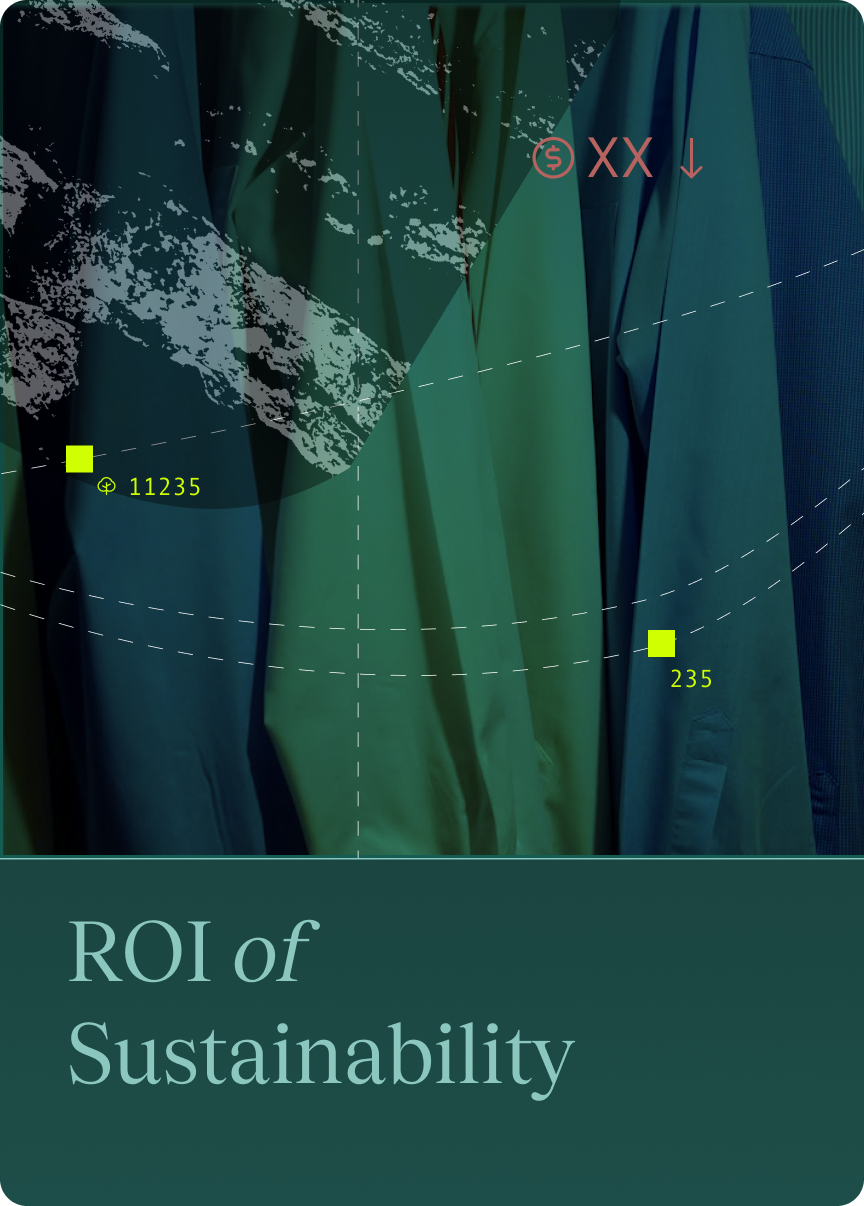In today's challenging economic climate, sustainability initiatives within retail and fashion companies are often viewed as discretionary costs. This guide empowers sustainability managers and teams with the tools to reframe these initiatives as strategic business imperatives that align with the priorities of financial decision-makers, such as Heads of Finance, Chief Operating Officers (COOs), and Chief Sustainability Officers.
By focusing on shared objectives and translating environmental and social initiatives into tangible business value, encompassing cost savings, risk mitigation, revenue growth and an enhanced brand reputation, retail’s sustainability managers can effectively integrate these efforts into broader business strategies and build a compelling case for increased budget allocation.
As regulatory pressures and consumer demand for sustainable practices grow, this approach ensures long-term resilience and a competitive advantage for organizations, regardless of their size or structure.
Why sustainability is no longer optional – especially in retail
The current economic and regulatory environment necessitates a shift in how businesses approach sustainability. Once considered an optional add-on, sustainability is rapidly becoming an essential element for business resilience and long-term growth.
Finance leaders are operating under increased pressure to control costs, manage risks effectively and demonstrate a clear return on investment for all expenditures.
Simultaneously, regulations around ESG reporting and other product-related legal compliance are becoming more stringent globally, carrying significant financial and reputational consequences for non-compliance.
This evolving landscape demands that sustainability managers articulate the business value of their initiatives in terms that resonate with the financial priorities of the organization.
This is particularly crucial for retail companies facing increased scrutiny and heightened consumer expectations for responsible business practices. As sustainability becomes synonymous with strategic foresight, it transitions from optional to essential, influencing every facet of business operations and strategy.
Steps to build your business case for sustainability

To secure leadership buy-in and budget approval for sustainability, you need more than good intentions – you need a solid financial case. This means translating environmental impact into the language of cost control, risk management, ROI and long-term shareholder value.
By aligning your sustainability strategy with the metrics that matter to CFOs, you can clearly demonstrate how these initiatives drive profitability, reduce risk and create lasting competitive advantages.
Think like a CFO: Cost, risk, ROI and where sustainability fits
To gain buy-in for sustainability budgets, it is crucial to understand what matters most to financial leaders, for example:
- Cost control:
Achieving operational efficiencies that translate into quantifiable cost savings. - Risk management:
Identifying and mitigating risks across the supply chain and regulatory landscape with precise predictive analytics. - Return on investment (ROI):
Expressing sustainability ROI through concrete financial metrics such as payback periods, profit margins or risk-adjusted returns. - Shareholder value:
Enhancing shareholder value by improving the company's long-term financial health and stability.
CFOs focus on the financial health and stability of the company. Therefore, sustainability initiatives must be framed not as mere expenses, but as strategic investments contributing to these economic objectives.
By demonstrating how sustainability efforts can lead to tangible cost savings and improved margins through operational efficiencies, mitigate significant risks using robust data-driven analyses and drive revenue growth through enhanced brand reputation and customer loyalty, sustainability managers can effectively communicate the strategic importance of their budget requests.
Speaking their language means utilizing financial metrics and key performance indicators (KPIs) and provides the concrete numbers that CFOs look for in evaluating proposals. KPIs could include:
- Reduced energy consumption costs
- Improved risk-adjusted returns
- Shortened payback periods
This approach ensures that sustainability is seen not merely as a compliance measure but as a core component of the company’s financial strategy and competitive advantage.
Turn climate action into business results
From cutting costs and reducing operational waste to mitigating risks and driving growth and loyalty, sustainability can deliver tangible business value. Below is a breakdown of the three key financial impacts of sustainability that every business leader should consider when conveying the business case for sustainability to leaders within their organization.
Cost savings and operational efficiency
Sustainability initiatives often yield significant cost savings and improve operational efficiency. Implementing energy-efficient technologies, such as switching to LED lighting, can reduce lighting costs by up to 90%.
Optimizing heating and cooling systems with smart controls can lead to substantial energy savings. Waste reduction and recycling programs can lower waste disposal costs by as much as 50% and even generate revenue from recyclable materials.
Resource optimization in manufacturing processes can cut costs by 15-25% by eliminating waste and improving material flow.
Case studies demonstrate these savings in real-world scenarios, such as Crane and Company saving nearly $275,000 annually through energy efficiency upgrades and IKEA saving $37 million per year by reducing food waste.
Risk mitigation
Ignoring sustainability can expose businesses to significant regulatory, supply chain and reputational risks, all with substantial financial implications.
Non-compliance with increasingly stringent ESG reporting regulations can lead to hefty fines and legal penalties.
Sustainable supply chain management is crucial for mitigating risks like raw material shortages and disruptions, which can cost enterprise-level organizations an average of $184 million in lost revenue annually.
Furthermore, a failure to embrace sustainability can severely damage a company's reputation, leading to consumer questions, boycotts and even a loss of investor confidence.
Revenue growth and competitive advantage
Sustainability can be a powerful driver of revenue growth and a key differentiator in a competitive market:
- Consumer demand:
Consumers are increasingly demanding sustainable products and services, with a significant percentage willing to pay a premium for them. - Company market share:
Companies with strong sustainability credentials often experience enhanced brand reputation and increased customer loyalty. - Investor approval:
Investors are also increasingly prioritizing companies with strong ESG performance, leading to better access to capital and potentially a lower cost of capital. - Hiring strategy:
Moreover, a commitment to sustainability can attract and retain top talent who are seeking purpose-driven work.
By highlighting these opportunities for revenue growth and competitive differentiation, sustainability managers can strengthen their budget proposals beyond cost savings alone to incorporate other compelling angles of building business value.
Get everyone on board and build a cross-functional case for sustainability in retail
Building a compelling sustainability business case requires collaboration across multiple teams to align goals and strategies effectively. Sustainability leaders are increasingly taking on more responsibility to collaborate and unite various departments to drive impactful change.
For example, in the retail sector, such collaboration is often split out as follows:
- Product teams:
Designing and developing lower-impact products together, encompassing more sustainable materials and implementing lower-impact manufacturing processes that meet consumer demand and regulatory standards. - Supply chain teams:
Engaging vendors and ensuring more sustainable practices are integrated throughout the supply chain, focusing on reducing environmental impacts, ensuring compliance and managing the risks associated with raw material sourcing and supplier operations. - Marketing, brand and communication teams:
Creating customer-facing claims that accurately represent the company's sustainability efforts while avoiding the pitfalls of greenwashing, enhancing brand value, increasing customer loyalty and communicating the more positive environmental impacts of products. - Operations teams:
Ensuring efficient implementation of sustainability initiatives to boost operational efficiencies and reduce costs. - Human resources (HR):
Using sustainability as a tool for employer branding to attract and retain talent, since employees increasingly value working for companies with strong sustainability commitments. - Finance departments:
As already covered, highlighting the potential cost savings, ROI and long-term financial benefits to secure the necessary budget and resources for sustainability initiatives.
By building these cross-functional alliances, sustainability managers can create a unified approach that strengthens the internal business case for sustainability, making it more likely to gain the necessary support and resources.
A united front is a powerful thing. This collaborative framework ensures the successful integration of sustainability across the organization, ultimately leading to a more sustainable and competitive business model.
Plan for tomorrow: Using scenarios data to future-proof your pitch
Scenario planning is a powerful tool for illustrating the long-term value of investing in sustainability and the potential costs of inaction. By developing contrasting scenarios – for example, where the company proactively invests in sustainable materials and another where it delays or neglects such investments – sustainability managers can clearly demonstrate the tangible benefits and risks at play.
Vaayu is proud to offer its Scenarios feature and tooling, which enables its users to test lower-impact materials, products, facilities and more.

Our partners have discovered that in the proactive scenario, investing in sustainability can yield significant cost savings through improved efficiencies while reducing risks associated with product and supply chain disruptions.
In contrast, the scenario of inaction might lead to increased operational costs, exposure to climate-linked disruptions such as raw material volatility and supply shocks, regulatory penalties and a diminished competitive advantage.
This approach not only provides a clear and compelling long-term financial perspective but also makes the case more immediate and urgent. It underscores that the cost of inaction often outweighs the cost of action, especially in a dynamic climate where unpredictable disruptions can severely impact business stability and growth.
By leveraging scenario planning, sustainability managers can effectively communicate the strategic importance of timely investments in sustainability initiatives, convincing decision-makers of the need for immediate action to safeguard the company's future.
Case study: On’s LightSpray™ manufacturing technology
To verify the impact of On’s innovative LightSpray™ technology, Vaayu conducted a comparative Life Cycle Assessment (LCA) that analyzed two scenarios: one using the traditional multi-step manufacturing process for shoe uppers and one using the streamlined LightSpray™ approach.
The results demonstrated that LightSpray™ can reduce production emissions by about 75%, and more when combined with renewable energy, highlighting its potential to transform the footwear industry.

Overall, the analysis resulted in credible data proving that LightSpray™ not only significantly reduces carbon emissions but also shortens the supply chain and simplifies production into a single step, eliminating the need for multiple assembly stages. This is a compelling narrative for climate change efforts but also for financial leaders wanting to understand the business case for sustainability.
Reputation, loyalty, talent – the case for the intangibles
Beyond direct financial returns, sustainability initiatives generate significant intangible benefits, such as enhanced brand reputation, increased customer loyalty, improved talent attraction and stronger investor relations.
While these benefits may be harder to quantify, various methods can be employed, including:
- Tracking customer preferences for sustainable products
- Monitoring brand sentiment on social media
- Analyzing employee satisfaction and retention rates
- Observing investor interest in ESG performance
Releasing an annual impact report provides the perfect opportunity for companies to study the behaviors and preferences above, making the case for sustainability extremely clear and official. How the reports are embraced also offers another opportunity for measurement of consumer interest and stakeholder engagement.
Communicating these intangible benefits alongside the tangible financial returns can provide a more holistic and compelling picture of the value of sustainability investments.
Smarter sustainability: How AI and automation accelerate ROI
Artificial Intelligence (AI) and automation are revolutionizing the way businesses approach sustainability, providing new efficiencies and insights that directly align with CFO priorities.
Automated data gathering for reporting obligations, such as under the Corporate Sustainability Reporting Directive (CSRD), significantly reduces the time and resources traditionally required for compliance, while ensuring accuracy and reliability.
For example, trusted data and Generative AI (GenAI) can streamline analytics and enhance strategic decision-making, allowing for precise materials impact modeling and forecasting.
From a financial perspective, AI in retail can reduce costs by minimizing:
- Time investment
Minimizing labor-intensive data processing and analysis tasks. - Risks
Mitigating risks through predictive analytics, scenario modeling and Prospective LCA. - Manual reporting
Speeding up reporting processes, thus allowing swifter, data-driven responses to regulatory and market changes. - Manual LCAs
The power of LCA automation cannot be emphasized enough, particularly for companies with hundreds or thousands of products.
In summary, AI not only optimizes operational efficiency but also enhances the strategic agility of a business, directly contributing to an improved return on investment (ROI).
Unlocking funding for sustainability via subsidies, tax breaks & grants
When it comes to the business case for sustainability, companies also have access to a variety of financial incentives that can support their sustainability initiatives.
These opportunities are often overlooked but can provide essential capital, especially when it comes to convincing financial leaders of the efficacy of investing in sustainability. They include tax credit, utility rebates and government grants.
Resources such as the Database of State Incentives for Renewables & Efficiency (DSIRE) and Grants.gov are invaluable for identifying relevant funding opportunities.
In addition, sustainability platforms and software like Vaayu can greatly streamline the funding application process, which is especially beneficial for teams with limited resources. These tools help by:
- Automating data collection and analysis
- Simplifying reporting requirements
- Ensuring all necessary information is easily accessible
By utilizing these resources and technologies, businesses can efficiently secure funding for sustainability projects, enhancing both their financial strategy and environmental impact.
Sustainability is a smart business strategy, not an unnecessary cost
Building a business case for sustainability requires a strategic approach that aligns environmental and social initiatives with core business objectives. By framing sustainability as a driver of long-term value, resilience and competitive advantage – rather than a discretionary cost – sustainability managers can effectively convince CFOs and finance leaders of the necessity of these investments.
Emphasizing cost savings, risk mitigation, revenue growth and the availability of external funding, coupled with strong cross-functional collaboration and effective communication of both tangible and intangible benefits, will pave the way for securing the necessary resources to drive meaningful and impactful sustainability outcomes.
At Vaayu, we are committed to supporting prospects and partners when it comes to convincing their financial teams and other stakeholders to invest in sustainability efforts. If you would like to know more, get in touch with us.



.png)


.png)

.png)
